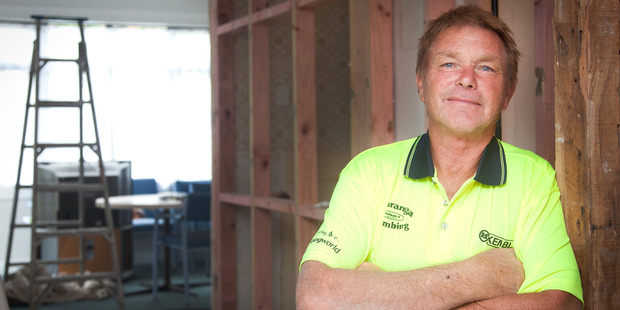Anne Shaw* and her husband love going on cruises, finding ocean travel to be the perfect holiday. But there’s another benefit for the grandmother of four: “It’s a way of escaping without having to say no to requests to look after grandchildren,” she admits.
Shaw isn’t alone: as much as they adore their grandkids, many of today’s nannas and grandmas feel that looking after grandchildren encroaches on their lives or is physically exhausting. Yet most of these women aren’t telling their grown-up offspring how they really feel.
Looking after the grandchildren can be a fraught issue; a complex web spun from conflicting emotions including love, guilt, joy, fear and obligation.
And the reality of doing it regularly – that it’s hardly all bliss and contentment – is such a taboo subject that all the grandmothers interviewed for this article asked not to have their identities revealed.
Baby boomer grandmothers know their Gen X sons and daughters are under significant financial strain. Dual-income families, demanding jobs, expensive childcare and the high cost of living mean mums and dads are turning to their own parents to help out with their kids while they work.
Grandparents provide childcare for almost one-third of children of working parents, according to 2015 data from the Australian Bureau of Statistics.
“In Australia, grandparents are the largest source of informal childcare after parents … Many households could not function without the unpaid input of grandparents,” write Barbara Pocock, Natalie Skinner and Philippa Williams in their 2012 book, Time Bomb: Work, Rest and Play in Australia Today.
This is no secret. What’s less well known is how these grandparents feel about and respond to requests for care – especially grandmothers, who usually take the lead in the grandparenting arena (research shows that even when grandfathers and grandmothers provide care together, grandmothers are more likely to take on routine or repetitive tasks such as bathing and feeding).
Janet Gibson*, a grandmother of 10, is frank: “When my first grandchildren were born, it was a pleasure to look after them. It never felt stressful.” But that was more than 20 years ago. Now in her 70s and suffering from arthritis, caring for the grandchildren is very different.
“I love the children but I’m physically unable to do what I used to do,” Gibson says, referring to the fact that it’s painful for her to pick up her baby granddaughter. Despite the difficulty, Gibson and her husband regularly look after the baby so their daughter can work. They’ve never told their daughter the extent of Gibson’s health issues.
Why not?
“Because I feel it would be unfair,” Gibson sighs, referring to the fact that she was very involved in caring for her older grandchildren and wants to treat her children equally.
This desire to help each of their children equally was mentioned by other grandmothers. Although understandable, it complicates the grandparenting experience, especially in large families, because more grandkids means more time and energy from grandparents who are only getting older.
Anne Shaw agrees – over the years her feelings towards grandparenting have changed. “I was so looking forward to becoming a grandparent,” she says. Before her first grandchild was born, Shaw reduced her paid employment from full-time to four days a week.
“I couldn’t give my kids money, so looking after my granddaughter was my way of helping out,” she says.
But 11 years and four grandchildren later, Shaw notices that she gets tired more easily and doesn’t have the patience that she used to. Still, she never says no to requests to look after her grandchildren because she “absolutely loves” seeing them. “I don’t admit it when I’m tired,” she says. “I just get on with it and do what needs to be done.” Now retired, this grandmother says she can simply catch up on sleep if she needs to after the kids leave.
But not all grandparents have this luxury: many juggle care of grandchildren with paid work, leaving them with little downtime.
The number of older women in the Australian workforce has significantly increased over the past few decades.
In the early 1980s, just 10 per cent of Australian women aged 60 to 64 were in paid employment, according to the Australian Institute of Family Studies. By 2009-2010, their presence had quadrupled to 41 per cent. (There has also been a small increase in the workforce participation of women aged 65 and over during that same period, from 3 to 7 per cent.)
Jill Westbrook*, in her mid-60s, is a working grandmother of two. For her, the issue of caring for grandchildren is more about how it restricts her income than the physical exhaustion. “I tend to say no to extra paid work because the grandchildren come first, but I’d like to say yes,” she says.
The combination of paid work and care also means Westbrook doesn’t get many free evenings. She wishes she had more time so she could play bridge, go to the theatre or the movies.
So why doesn’t she just say no when she is asked to look after her grandkids?
“Because I love my children and don’t want to see their lives any more difficult,” says Westbrook. “Too much financial pressure can strain a marriage, and if I can ease that I’m very happy. I’m divorced and want my children to be with their partners forever.”
Helen Andersen* is in her early 60s and regularly cares for three of her grandchildren. Of all the women I spoke to, Andersen is the only one who has initiated honest conversations with her children about her grandparenting role.
“I come home from a day looking after the kids and every bone in my body aches,” she says. “I don’t have the energy I used to, and I don’t know if the younger generation appreciates that fatigue.”
Since having that conversation, Andersen’s daughter treats her mother more gently and is more considerate. And Andersen is certain that’s a good thing. “When you’re honest, it’s such a relief,” she says. She believes it’s vital for grandmothers to let their kids know they’re not superwomen, instead of always insisting they’re fine and happy to look after grandchildren.
Andersen also acknowledges how difficult it is to refuse requests for grandchildcare: “You always push yourself because it’s your child,” she says. “The hardest thing to do is say no because we’re programmed to help and love and care and to give support over resting our aching bodies.”
Myra Hamilton, a research fellow with the social policy research centre at the University of NSW, says: “Because grandchildcare is tied up with love, family history, culture and shared experience, setting boundaries around care becomes difficult.”
Dr Briony Horsfall, a sociologist at Swinburne University, agrees there are great expectations on Australian women to be constant sources of care-giving. “These grandmothers are nurturing multiple, intergenerational relationships. It’s quite subversive to say no because there’s a risk of being seen as a ‘bad’ grandmother and a ‘bad’ mother [to adult children].”
Another complicating factor, particularly for paternal grandmothers, is the fear of decreased access to grandchildren if they decline care, especially if it’s a daughter-in-law making the request. Sometimes, it’s easier to play it safe and just lie – as does one grandmother who pretends she is feeling unwell, or says she’s going out.
Of course, it’s not all bad: caring for grandchildren can provide enormous joy and satisfaction. When I asked each grandmother what their ideal care scenario would be, not one elected to opt out of caring for their grandchildren. Rather, grandmother utopia involves fewer care hours; or to spend more time having fun with grandchildren, for example taking them to the park or the beach; or to have extra paid help to do the more physically demanding jobs, such as cleaning and other domestic duties.
A 2015 study, Grandparent Childcare and Labour Market Participation in Australia, commissioned by National Seniors Australia, found there is a tipping point after which providing care becomes less enjoyable: grandparents who provide 13 or more hours of care a week are less likely to enjoy caring for their grandchildren, and more likely to feel the effects on their work and retirement decisions.
But often it’s not so easy for grandparents to reduce their care hours, says Myra Hamilton, a co-author of the report. “The fewer options that adult children have in terms of work flexibility, childcare options and financial security, the harder it is for grandparents to say no to requests for grandchildcare.”
A survey commissioned by the Australian Seniors Insurance Agency found that 58 per cent of grandparents have had to sacrifice their own lifestyle and recreation, and 30 per cent have had to alter their work arrangements in order to care for grandchildren, while 23 per cent said they’d like to look after their grandchildren less often than they do.
Becoming a grandparent is supposed to be the gold medal for surviving the hardships of parenting; the ultimate love affair. But the truth is more nuanced.
“My friends secretly comment about the mind-numbing boredom of grandchildcare,” says Andersen.
“You are dealing with children with brains the sizes of peas. Lots of us held high-powered jobs, were successful businesswomen, so however much you love those sweet babies … how many games of Eye Spy can you play without wanting to rush back to your fabulous novel and a quiet cup of coffee?
“We feel wanted, satisfied with a job well done, loved and delighted in the love we get back,” she says. “But it comes with issues no one discusses and that men never even think about.” •
*Names have been changed.
- In 2013, the average age of becoming a grandparent was 58-60; in 1953, it was 54-56.
- In 2014, 837,000 Australian children were cared for by their grandparents in a typical week.
- In 2014, more than 97 per cent of grandchildcare was unpaid.
Sources: ABS, McCrindle Research
 David Kazachov claims he has experienced ageism as a job seeker. Photo: Nick Moir
David Kazachov claims he has experienced ageism as a job seeker. Photo: Nick Moir Robert De Niro showed old dogs sometimes have the best tricks in The Intern.
Robert De Niro showed old dogs sometimes have the best tricks in The Intern.
 The Association of Superannuation Funds estimate of how much a 65-year-old couple need to live is absurdly high. Illustration: John Shakespeare Photo: Illo:Shakespeare
The Association of Superannuation Funds estimate of how much a 65-year-old couple need to live is absurdly high. Illustration: John Shakespeare Photo: Illo:Shakespeare








